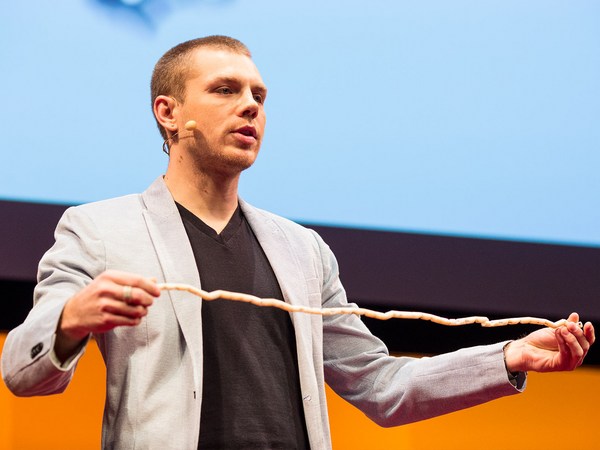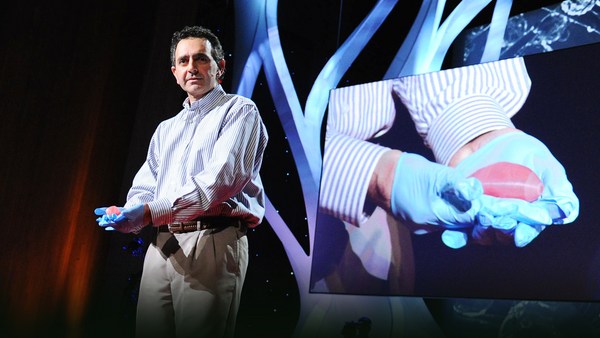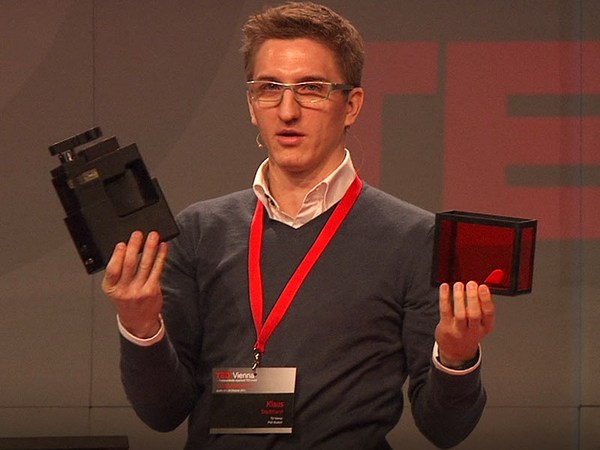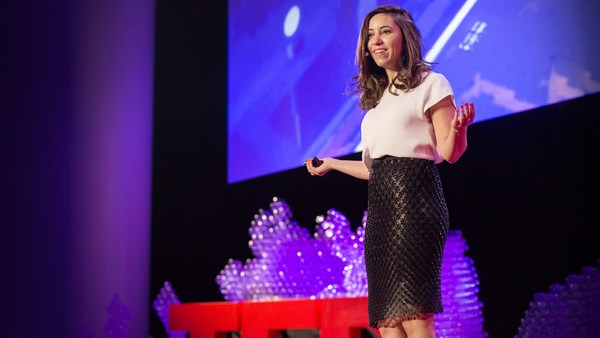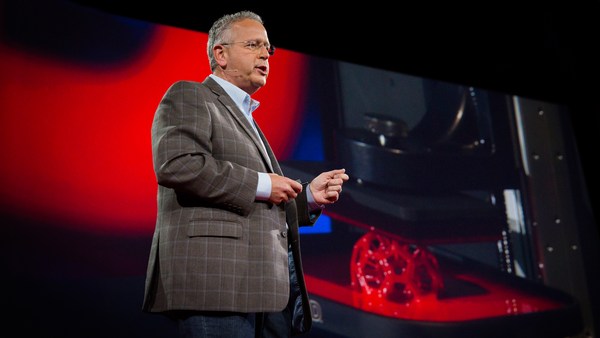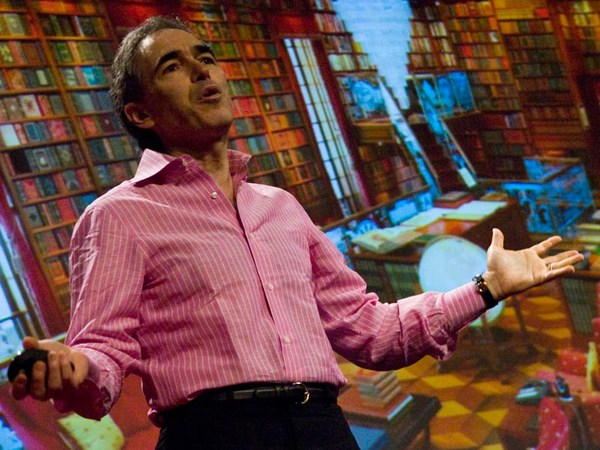My grandfather was a cobbler. Back in the day, he made custom-made shoes. I never got to meet him. He perished in the Holocaust. But I did inherit his love for making, except that it doesn't exist that much anymore. You see, while the Industrial Revolution did a great deal to improve humanity, it eradicated the very skill that my grandfather loved, and it atrophied craftsmanship as we know it.
But all of that is about to change with 3D printing, and it all started with this, the very first part that was ever printed. It's a little older than TED. It was printed in 1983 by Chuck Hull, who invented 3D printing. But the thing that I want to talk to you about today, the big idea that I want to discuss with you, is not that 3D printing is going to catapult us into the future, but rather that it's actually going to connect us with our heritage, and it's going to usher in a new era of localized, distributed manufacturing that is actually based on digital fabrication.
So think about useful things. You all know your shoe size. How many of you know the size of the bridge of your nose or the distance between your temples? Anybody? Wouldn't it be awesome if you could, for the first time, get eyewear that actually fits you perfectly and doesn't require any hinge assembly, so chances are, the hinges are not going to break? But the implications of 3D printing go well beyond the tips of our noses.
When I met Amanda for the first time, she could already stand up and walk a little bit even though she was paralyzed from the waist down, but she complained to me that her suit was uncomfortable. It was a beautiful robotic suit made by Ekso Bionics, but it wasn't inspired by her body. It wasn't made to measure. So she challenged me to make her something that was a little bit more feminine, a little bit more elegant, and lightweight, and like good tailors, we thought that we would measure her digitally. And we did. We built her an amazing suit.
The incredible part about what I learned from Amanda is a lot of us are looking at 3D printing and we say to ourselves, it's going to replace traditional methods. Amanda looked at it and she said, it's an opportunity for me to reclaim my symmetry and to embrace my authenticity. And you know what? She's not standing still. She now wants to walk in high heels.
It doesn't stop there. 3D printing is changing personalized medical devices as we know them, from new, beautiful, conformal, ventilated scoliosis braces to millions of dental restorations and to beautiful bracings for amputees, another opportunity to emotionally reconnect with your symmetry. And as we sit here today, you can go wireless on your braces with clear aligners, or your dental restorations. Millions of in-the-ear hearing aids are already 3D printed today. Millions of people are served today from these devices. What about full knee replacements, from your data, made to measure, where all of the tools and guides are 3D printed? G.E. is using 3D printing to make the next generation LEAP engine that will save fuel to the tune of about 15 percent and cost for an airline of about 14 million dollars. Good for G.E., right? And their customers and the environment. But, you know, the even better news is that this technology is no longer reserved for deep-pocketed corporations. Planetary Resources, a startup for space explorations is going to put out its first space probe later this year. It was a fraction of a NASA spaceship, it costs a fraction of its cost, and it's made with less than a dozen moving parts, and it's going to be out in space later this year. Google is taking on this very audacious project of making the block phone, the Ara. It's only possible because of the development of high-speed 3D printing that for the first time will make functional, usable modules that will go into it. A real moonshot, powered by 3D printing.
How about food? What if we could, for the first time, make incredible delectables like this beautiful TED Teddy here, that are edible? What if we could completely change the experience, like you see with that absinthe serving that is completely 3D printed? And what if we could begin to put ingredients and colors and flavors in every taste, which means not only delicious foods but the promise of personalized nutrition around the corner?
And that gets me to one of the biggest deals about 3D printing. With 3D printing, complexity is free. The printer doesn't care if it makes the most rudimentary shape or the most complex shape, and that is completely turning design and manufacturing on its head as we know it. Many people think that 3D printing will be the end of manufacturing as we know it. I think that it's the opportunity to put tomorrow's technology in the hands of youngsters that will create endless abundance of job opportunities, and with that, everybody can become an expert maker and an expert manufacturer. That will take new tools. Not everybody knows how to use CAD, so we're developing haptics, perceptual devices that will allow you to touch and feel your designs as if you play with digital clay. When you do things like that, and we also developed things that take physical photographs that are instantly printable, it will make it easier to create content, but with all of the unimagined, we will also have the unintended, like democratized counterfeiting and ubiquitous illegal possession.
So many people ask me, will we have a 3D printer in every home? I think it's the wrong question to ask. The right question to ask is, how will 3D printing change my life? Or, in other words, what room in my house will 3D printing fit in?
So everything that you see here has been 3D printed, including these shoes at the Amsterdam fashion show. Now, these are not my grandfather's shoes. These are shoes that represent the continuation of his passion for hyper-local manufacturing. My grandfather didn't get to see Nike printing cleats for the recent Super Bowl, and my father didn't get to see me standing in my hybridized 3D printed shoes. He passed away three years ago. But Chuck Hull, the man that invented it all, is right here in the house today, and thanks to him, I can say, thanks to his invention, I can say that I am a cobbler too, and by standing in these shoes I am honoring my past while manufacturing the future.
Thank you.
(Applause)
